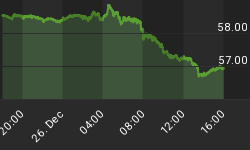There are several commentators on the web that I read consistently, and John Hussman of Hussman Funds is one of them. I always take great comfort when my analysis rhymes with his because like myself I know he does his homework too.
My weekly report on sentiment was about not straying too far from the data because of short term price moves. For example, this past week's pop to almost highs in the major indices has the "this stuff doesn't work" readers emailing in. As stated a couple of weeks ago, we are in "Bounce Mode". In the end, I see no reason to stray from the price cycle as defined by greed and fear that has worked over and over again.
This week, Hussman has similar thoughts on his mind. On abandoning the data because of short term market movements, he states:
"Many investment professionals have developed a habit of forming expectations based on nothing more than extrapolation of short-term trends in the data, even when those extrapolations are inconsistent with market history or well-established economic relationships. This was a key element in creating the housing bubble - no price was too high and no bubble was recognized, because all that mattered was that prices were rising. The focus of analysts on the short-term ups and downs of economic and earnings reports has become such a mainstay of financial news that it's not at all clear to me that investors even recognize how devoid the current financial discourse is of real analysis."
He goes on to state and because I find truth and humor in the following:
"Instead, the only question today is whether earnings and economic reports are delivering 'surprises' versus what 'the Street' estimated the day before the data was released....But to watch a half hour of CNBC today is like watching an old episode of Gomer Pyle ('Well, surprise, surprise, surprise!')."
Hussman also touched on another theme that I have written on recently. In my article, "Danger, Danger Will Robinson", I state that the combination of overly bullish sentiment and strong trends in our indicator that measures trends in gold, crude oil, and yields on the 10 year Treasury bond had a high likelihood of leading to a market top. Hussman uses similar data to reach similar conclusions. He characterizes this market environment as overbullish, over valued, overbought, and rising yield pressures, and using more extensive data, he provides the following context to these observations:
Last week, we observed a subtle shift in yield pressures, which has historically been associated with fairly abrupt "air pockets" in which stocks have typically lost 10% or more within the span of about 6 weeks.
Consider the following conditions: 1) market valuations above their historical norm by any amount at all - for example, a dividend yield on the S&P 500 anything less than 3.7%, and; 2) The 10-year Treasury bond yield and the year-over-year CPI inflation rate higher than their levels of 6 months earlier (regardless of whether their absolute levels have been high or low).
If you look at market history since 1940, this condition has been in effect nearly 20% of the time. Yet this set of factors alone has made an enormous difference in the returns achieved by the market. When the above conditions have been in effect at the same time, the S&P 500 has actually lost ground on a price basis, and has delivered an annualized return of just 0.28%. In contrast, when those conditions have not been in effect, the market has advanced at an average annualized rate of 14.94%. Of course, these averages mask a lot of volatility, but it is clear that even the most basic combination of low stock yields and rising yield pressures is hostile to total returns.
To the above conditions, if Treasury bill yields are also higher than 6 months earlier (again, regardless of the absolute level of yields), the annualized return drops to -0.83%. Add a discount rate higher than 6 months earlier, and the annualized return drops to -2.22%.
Now add overbought conditions (say, a 12-month advance in the S&P 500 of greater than 30%), and the annualized return turns sharply negative, to -39.17%. Overvalued, overbought, conditions with rising yield pressures are trouble. Given those conditions, excessive bullishness only worsens the situation. Now, this combination of conditions has never persisted for an entire year, so the actual loss sustained by the market is not so extreme, but suffice it to say that the typical loss has been in excess of 10%. Based on the current overbought status of the market, there are only three similar periods that we can identify in post-war data: August-October 1999 (which was followed by an abrupt air pocket of greater than 10%), September-October 1987 (no comment required), and September-December 1955 (which was followed by a 10% correction, a brief recovery, and a secondary decline to re-test the initial low).
In the final analysis, I like to read Hussman because I believe he is diligent and disciplined in his analysis. The fact that I come to similar conclusions often is comforting although that doesn't mean we are always correct. Nonetheless, the consistency of the process or approach is over half the battle in this game, and that is what I strive for, and that is why I think Hussman is successful too.
















